If there's one place in South America brimming with fascinating and awe-inspiring attractions, it's Peru. With wonders such as Macchu Pichu, the Colca Canyon, the mysterious Nazca lines, the Coricancha Inca Ruins and Pisco, it's no wonder Peru is one of South America's most popular tourist destinations. The country is a favourite with backpackers and budget travellers and it is possible to travel cheaply if necessary. However, Peru's most famous tourist activity, hiking the Inca Trail, is expensive and must be organised in advance as permits are required and very limited.Cities like Lima, Cusco, and Arequipa are charming and atmospheric, if a little shabby, with lots of colour and run-down colonial buildings. Peru has an interesting and refreshingly unique cuisine and the restaurant scene in places like Lima is fun to investigate. Lima also has a vibrant nightlife and some decent museums.Getting around Peru is fairly cheap and easy with plenty of internal flights operating on an almost daily basis and an affordable and reasonably reliable public transport system. It's advisable to fly between cities when possible or rent a car and explore all this mystical country has to offer, although long-haul bus trips are also an option.
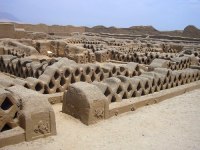
History lovers should make a point of visiting Chan Chan while they're in Peru. Once the Chimu Kingdom's capital, it was home to around 60 000 inhabitants, and was wealthy in gold, silver and ceramics. Most of its treasures disappeared with Spanish looters generations ago, though it remains the largest pre-Columbian city in the Americas, and the largest adobe city in the world. Today, it is considered an endangered UNESCO site, given that its adobe buildings are sensitive to time and the elements. Indeed, only one of the site's nine palaces has been properly excavated and opened to the public. Visitors will still see more than enough to paint a picture of what the city must have looked like. Highlights include the intricate depictions of birds, fish and otters on the walls, which add mesmerizing details to the massive site. Travellers will have the best experience if they visit with a guide.
Address : Moche Valley, outside Trujillo.
Website : www.chanchan.gob.pe
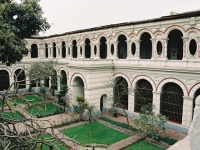
San Francisco is the most spectacular of Lima's colonial churches. Thankfully, locals and visitors can still enjoy its striking white and yellow towers and stone façade, as its one of the few buildings to survive the earthquake of 1746. Its famous underground catacombs contain the bones and skulls of around 70 000 people, while arches, columns, mosaic tiles and a Moorish-style ceiling decorate its exquisite interior. The Baroque church also has a superb 17th-century library full of antique texts, and a room of painted masterpieces by Flemish greats Rubens, Jordaens and Van Dyck. Visitors must take a guided tour if they want to explore the church and catacombs. Tours are available in English. The Church of San Francisco is located just one block away from the Plaza Mayor, which is a UNESCO-listed site.
Address : Corner of Lampa and Ancash Avenues.
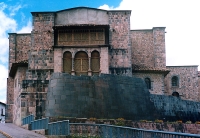
The sacred complex of Coricancha was considered the centre of the Inca world. Its name means something like 'Golden Enclosure', though Inca stonework is all that remains of the ancient Temple of the Sun. The walls and floors were once covered in sheets of solid gold, and the courtyard was filled with golden statues. Spanish reports tell of opulence that was 'fabulous beyond belief'. Spanish colonists constructed the Church of Santa Domingo on the site, destroying the temple and using its foundations for the cathedral. Major earthquakes have severely damaged the church, though the Inca stone walls still stand, and are a testament to their superb architectural skills and sophisticated stone masonry. Visitors will find an underground archaeological site museum nearby. It contains a number of interesting pieces, including mummies, textiles and sacred idols. Tourists will have the best experience if they explore the site with a guide, as good tours provide context and bring the place to life.
Address : Pampa del Castillo at Plazoleta Santo Domingo.
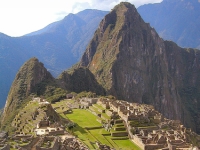
The ancient Inca citadel of Machu Picchu is regarded as the most significant archaeological site in South America, and one of the finest examples of landscape architecture in the world. It is the most enthralling of the region's citadels, and lies high in the Andes. Fortunately, Spanish colonists didn't discover and destroy the structure, as it's completely concealed from below. In fact, the western world didn't find it until an American explorer stumbled across its thickly overgrown ruins in 1911. The site is surrounded by grazing llamas and steep agricultural terraces, and consists of a central plaza, towers, palaces, water canals, ornate fountains, food storehouses, perfectly balanced archways and a sacred ceremonial area of royal tombs and intricately carved temples. The sacred Temple of the Sun is one of the site's highlights. Another is the mountain called, Huayna Picchu, which forms a dramatic backdrop to the city. All told, 'The Lost City of the Incas' has an abiding sense of majesty and mystery, despite its popularity among tourists.
Website : www.machupicchu.gob.pe
Transport : Trains leave from Cuzco and Urubamba to Aguas Calientes, where a bus transports passengers to the ruins. There is also a path leading up to the ruins from Aguas Calientes for those who prefer to walk.
Opening times : Daily 6am-5pm. Huayna Picchu closes at 3pm.
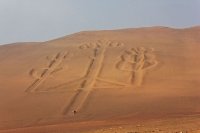
Pisco is a small port and fishing village, and is best known for its fiery white-grape brandy of the same name. One of Peru's major ancient civilisations, the Paracas, established their culture in the area. They left an astounding collection of antiquities, which travellers can see in Lima's museums. The area's main appeal is as a base from which to explore the nearby Paracas National Reserve, where visitors can view an incredible variety of birds and marine life. Boat tours of the Ballestas Islands are another of the area's drawcards. The islands are off limits to people, but the boat tours afford spectacular close up views of the wildlife. Visitors will see thousands of resident and migratory birds, including terns, penguins, cormorants, flamingos, pelicans and red boobies. Huge colonies of sea lions line the shores, and dolphins, turtles and whales populate the surrounding waters. Boats also pass the famous Candelabra on their way to the islands. The pre-historic drawing is etched into the sandstone cliffs overlooking the bay.
Address : Pisco is 150 miles (95km) south of Lima.

Shoppers, vendors and sightseers crowd the long pedestrian street that connects the striking Plaza Mayor to Lima's other main square, Plaza de Armas. Visitors will find the heart of the old town in these two locations, and invariably begin their sightseeing at one of them. Plaza de Armas' bronze fountain and old street lamps give it a gracefully colonial feel. Indeed, its story stretches back to the era of Spanish rule, when it was the central marketplace and the venue for bullfights. Today, several notable buildings surround the square, including the grand Spanish Baroque Cathedral, which occupies the site of an ancient Inca temple and houses the Museum of Religious Art and Treasures, and the impressive Government Palace, where the changing of the guard takes place. The Archbishop's Palace is also in the vicinity. Tourists should take in the Plaza San Martin as well. The square is a hive of activity, where shoe-shiners, street artists, and soapbox speakers surround its central fountain. On a cautionary note, visitors should avoid the usually peaceful and jovial Plaza San Martin when political protests and rallies are underway, as these can occasionally turn violent.
Address : Jr. Junin and Jr. Carabaya.
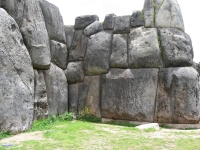
Of the four ruins near Cuzco, Sacsayhuamán is the closest and most remarkable. Spanish conquistadors used it as a quarry during their day, given its proximity to Cuzco and the dimensions of its stones. Indeed, the site provided many of the materials for the city's colonial buildings. The Spanish destroyed the original complex to such an extent that little is known about the actual purpose these magnificent buildings once served. That said, the complex is usually referred to as a fortress because of its high, impenetrable walls. Some believe it may just as easily have been a religious or ceremonial centre. The ruins cover an enormous area, but only 40 percent of the original complex remains. History lovers must visit, as the site offers a fine example of the Inca's extraordinary stone masonry. According to estimates, the complex took about 100 years to build, requiring thousands of labourers. The massive blocks of stone fit together perfectly without the aid of mortar. Each one weighs between 90 and 125 tonnes, and stands around 16ft (5m) tall.History buffs will note that the Inca and Spanish fought at the centre during the infamously bloody battle of 1536. The conflict left thousands of native people dead, providing food for circling condors. Since then, Cuzco's Coat of Arms has featured eight condors in memory of the event. Today, the site holds the annual celebrations of Cuzco's most important festival, Inti Raymi: the sun festival. Tourists should attend the colourful and spectacular affair if at all possible.
Transport : A steep 40 minute (2km) walk up from the Plaza de Armas.
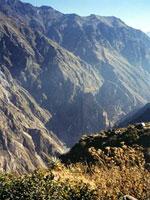
The Colca Canyon is the most popular excursion from Arequipa, and the world's second deepest canyon. Culture lovers will relish the extremely picturesque valley, which is home to huge mountains, grand churches, lively market places and herds of wandering llamas. The Crux del Condor Lookout is the region's most popular viewing point, and the best place to see giant condors soaring above the dramatic depths of the canyon below. Many people stay in the quaint market town of Chivay, which is some three hours from Arequipa. It offers a good range of restaurants, bus services and accommodation, and is an excellent base from which to explore the area. Hikers will find many trails in the surrounding hills. They can also venture down to the bottom of the canyon and overnight in one of the tiny Indian settlements below. Travellers can choose from a number of tour operators, whose packages range from hikes to multi-day adventures. Visitors can set off alone and enjoy self-guided tours too.
Transport : Public bus from Terminal Terrestre or San Juan de Dios 510, Arequipa. Organised tours also visit the canyon daily. It is a five-hour journey.
Nazca is a small desert town in southern Peru. Named after the Nazca civilisation, the area is famous for the mysterious lines and diagrams etched into the surrounding desert floor. Visitors will also find some interesting museums and archaeological sites, including the Chauchilla Cemetery, where 12 exposed underground tombs contain skeletons and preserved mummified forms. That said, the town's main attraction is an aerial flight over the Nazca Lines, which are spread over miles of the region's vast desert terrain. The dimensions of these enormous figures, spirals and geometric designs are so large, the only way to view them is from the air. Pilots will point out the outlines of intriguing bird and animal representations, such as the Condor, Monkey, Spider, Hummingbird, and the unusual cartoon-like character known as the Astronaut. These figures were made by removing sun-darkened stones from the desert floor to expose the lighter coloured stones below, and were created over a thousand years ago.Experts have not discovered why they were created, nor how they were designed. For tourists, the Nazca Lines are among the strangest and most unforgettable sights in the country. They're a legacy of the ancient Nazca culture and one of South America's great mysteries.
Address : Nazca is a few miles in from the coast, 238 miles (383km) southeast of Lima.
Transport : Ormeno and Civa are two of the best bus companies with offices in Nazca.
Known as the Sacred Valley of the Incas, this breathtakingly beautiful and fertile valley stretches between the villages of Pisac and Ollantaytambo. Travellers will navigate it on the winding Urubamba River, with ancient Inca ruins watching from the hilltops above. The river's course also passes a sprinkling of small, traditional settlements. Visitors should note that the centrally situated Urubamba town has a decent tourist infrastructure, and is becoming a popular base from which to explore the valley. The region's most-visited sites are the citadel above Pisac and the fortress of Ollantaytambo. Culture lovers will enjoy the quaint village of Pisac, which is known for its interesting Tuesday, Thursday and Sunday morning markets. Agricultural terraces flank the steep sides of the mountain and have seen many centuries of use. Alarmingly narrow trails lie above them and lead to the cliff-hugging citadel. Visitors will find massive stone doorways and stairways cut into the rock.The road terminates at the far end of the Sacred Valley, where travellers will encounter the ancient traditional town of Ollantaytambo. Its temple-fortress clings to the nearby cliffs. Originally developed as an Inca administrative centre, the town's layout is one of the few remaining models of an Inca grid plan, and the existing town lies on the remaining Inca foundations. The ruins include the Royal Chamber, the Princess Baths and the Temple of the Sun.
Transport : Pisac is a one-hour bus journey from Cuzco. The Pisac citadel is a 30-minute walk from behind the main square or 20 minutes by taxi. Ollantaytambo is situated on the Cusco-Machu Picchu train route, or can be reached by bus with a change at Urubamba.

Travel Guide powered by Word Travels, copyright © 2023 Globe Media Ltd. By its very nature information in this travel guide is subject to change at short notice and travellers are urged to verify information on which they're relying with the relevant authorities. Neither Globe Media Ltd nor Travel Vogue can accept any responsibility for any loss or inconvenience to any person as a result of information contained above.